Garden Ideas for Muddy Areas: Transform Your Yard with Easy Solutions
Tired of dealing with a muddy backyard? You’re not alone. Many homeowners struggle to find ways to manage soggy, muddy areas that make their outdoor spaces less enjoyable. Muddy spots can turn into a real mess, especially after heavy rains.
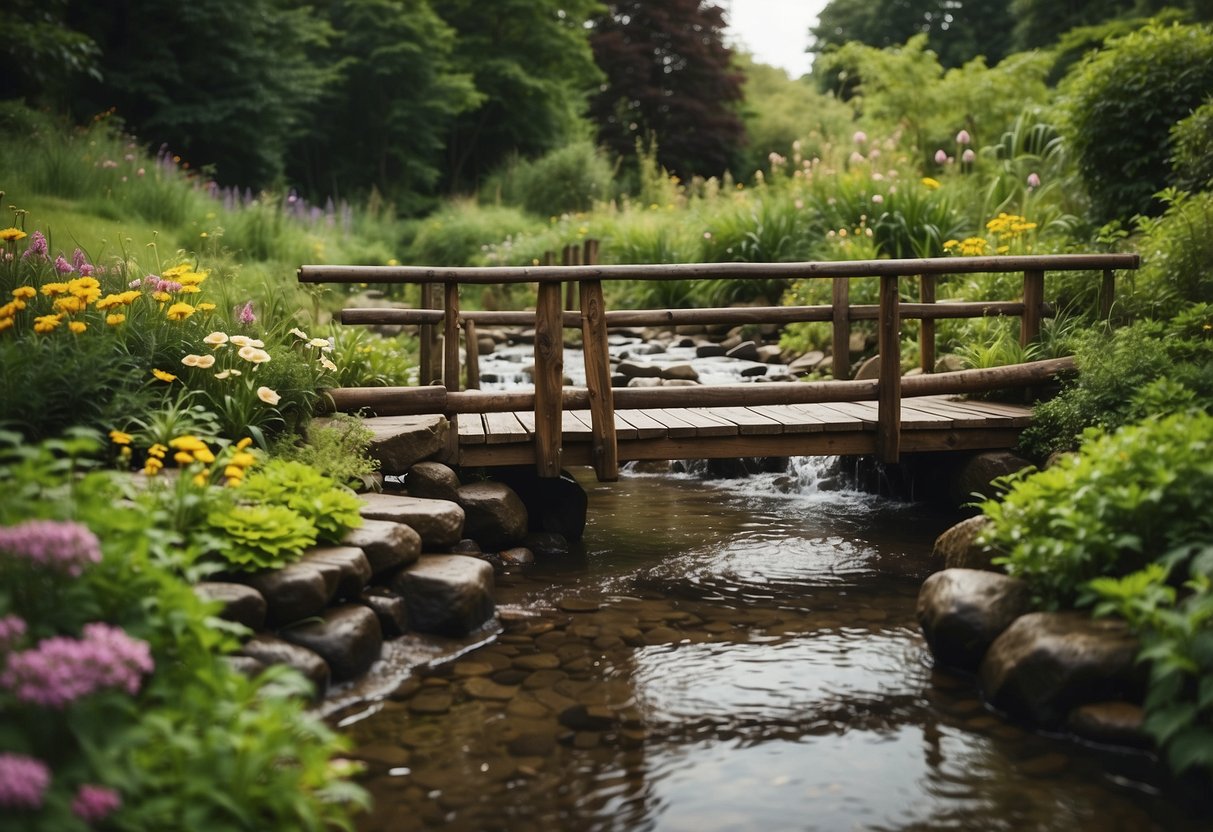
Transforming these problem areas into beautiful, functional parts of your garden is easier than you might think. With the right ideas, you can create a lovely outdoor space that stays clean and dry, no matter the weather.
1) Gravel Pathways

Gravel pathways are a fantastic option for covering muddy areas in your garden. They are simple to install and provide an instant fix.
To start, pour gravel at least 1 1/2 inches deep. This ensures good coverage and helps prevent mud from resurfacing.
Consider adding edging along the sides to keep the gravel in place and maintain a neat appearance. This helps prevent the gravel from spilling into your garden.
Gravel pathways are also low maintenance and can handle heavy foot traffic. Plus, they deter pests and don’t support fungal growth.
For more information, check out this article on easy walkways.
2) Stepping Stones

Stepping stones are a great way to handle muddy areas in your garden. They provide a stable path and help keep shoes clean.
You can use different materials like large, flat rocks or prefabricated stones. This adds a nice look to your garden.
Placing the stones over a gravel base can also improve drainage and prevent them from sinking into the mud.
Try experimenting with stone patterns to create an interesting, customized path. It’s a simple and fun solution for muddy garden areas.
3) Raised Garden Beds
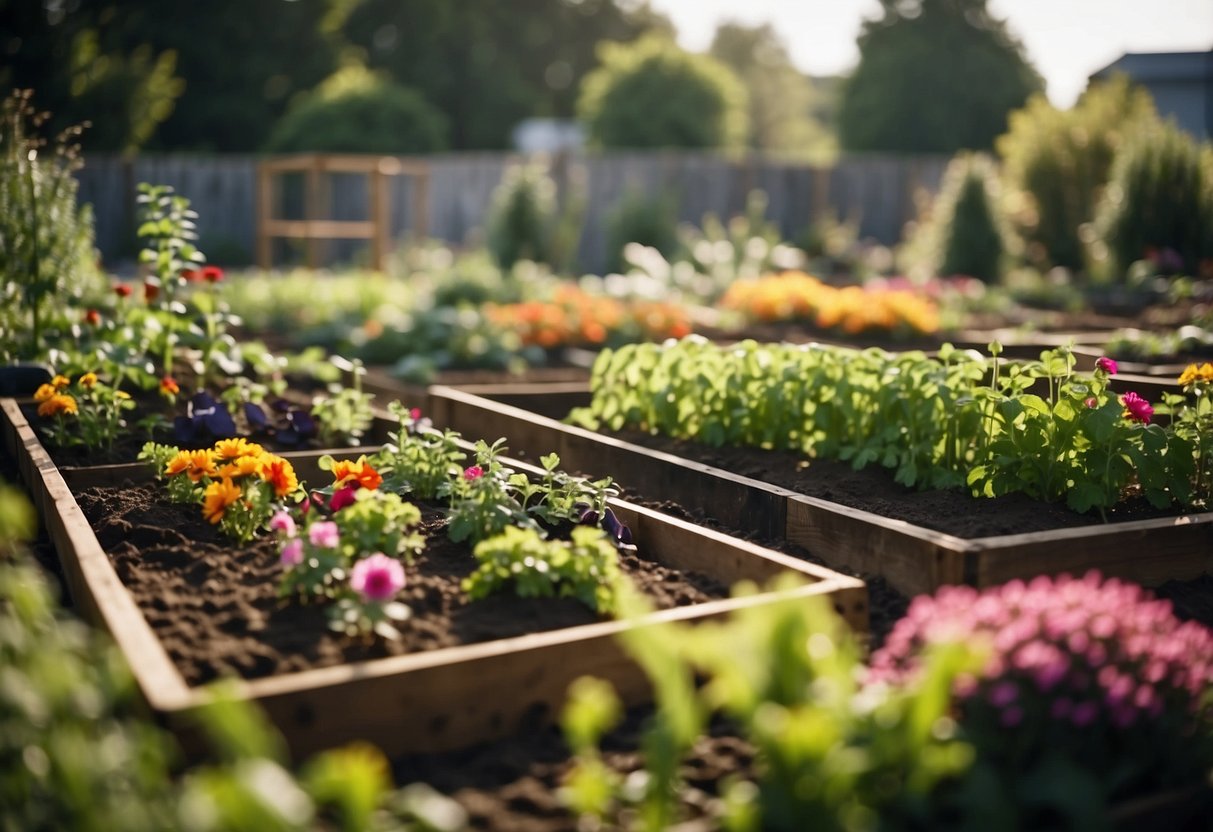
Using raised garden beds can be a great solution for muddy areas in your garden.
A raised garden bed lifts your plants above the muddy ground. This helps with better soil drainage and prevents your plants from getting waterlogged.
You can also customize the soil in your raised beds. This allows you to choose the best mix for your plants to thrive.
Adding a 2×2 raised planter can be a simple and effective way to begin. It’s small enough to fit in tight spaces yet big enough for flowers and herbs.
Raised garden beds provide easy access to your plants, making it simpler to care for them and keep them healthy. They can also add a structured look to your garden area.
4) Rain Gardens

Rain gardens are a great way to manage muddy areas in your backyard. They help redirect water and provide a home for water-loving plants.
Choose a spot where water naturally collects. Dig a shallow bowl shape and fill it with plants that thrive in wet soil. Some options include Itea virginica, Joe Pye weed, and native grasses.
Add a mix of soil, sand, and compost to help with drainage and plant growth. You can also place rocks around the edges for a decorative touch. This makes your garden both functional and beautiful.
5) Wood Chip Mulch

Wood chip mulch is a great way to cover muddy areas in your garden. It helps absorb water and keeps mud from forming.
Using wood chips is budget-friendly and eco-friendly. This solution provides a dry surface, making it easier to walk on. Wood chips also add organic matter to the soil, improving its quality.
Simply spread the wood chips over the muddy spots. You’ll notice a big difference quickly. This approach also enhances your garden’s look with a natural touch.
Learn more about using wood chips for a muddy yard.
6) Permeable Paving
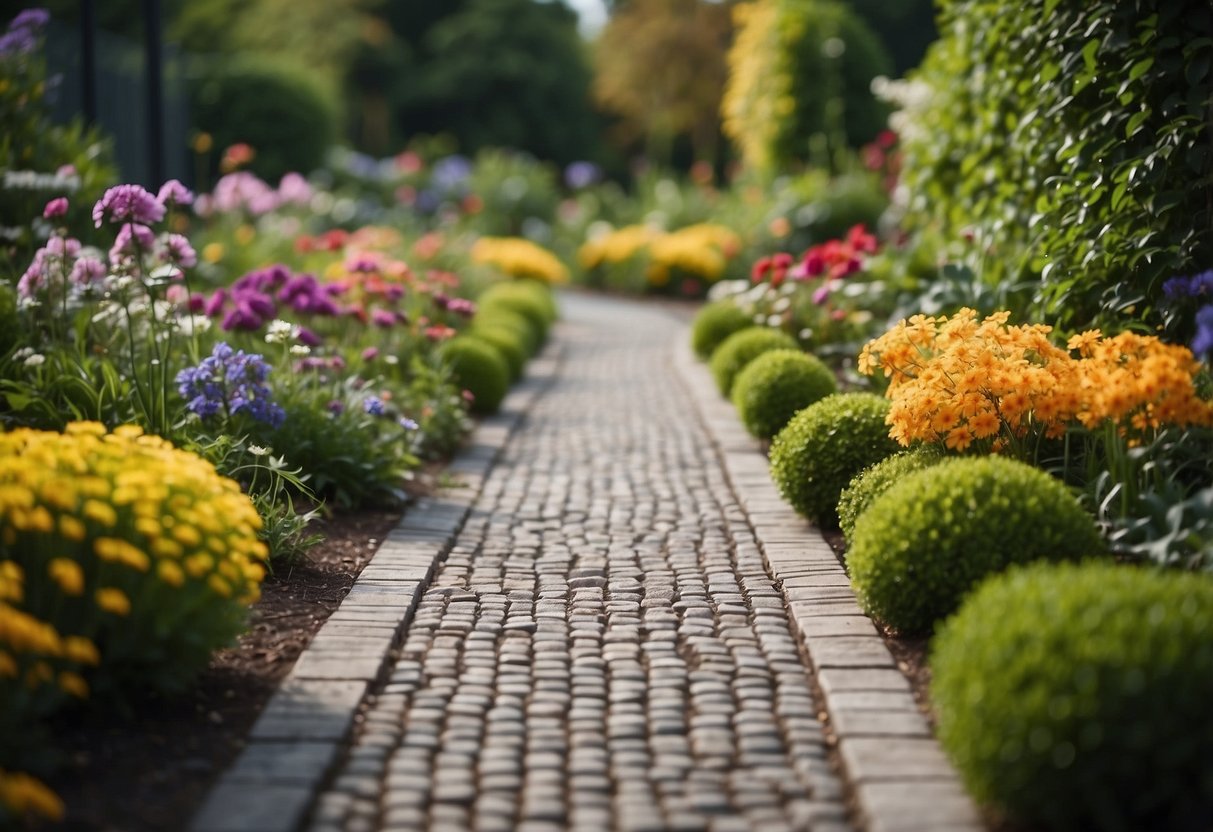
Permeable paving is a great way to manage muddy areas in your garden. These pavers allow water to pass through, reducing puddles and mud. This can help improve drainage and create a stable surface.
Made from materials like recycled plastic, permeable pavers are environmentally friendly. You can easily use them to create paths, patios, and driveways.
Permeable paving can also help reduce erosion. By letting water seep into the ground, it keeps soil in place. This makes your garden healthier and more enjoyable.
Learn more about permeable pavers.
7) Ground Cover Plants

Ground cover plants are perfect for muddy areas. They spread across the ground, soaking up excess moisture and keeping mud at bay.
Lamb’s Ear is a great choice. It has fuzzy, silvery leaves and thrives even in poor soil conditions.
You can also consider Sedum, which is drought-resistant and can handle foot traffic.
For sunny areas, Ice Plant stands out with its vibrant pink or purple flowers and water-storing leaves.
Each of these options will help transform your muddy space into a beautiful garden area.
8) French Drains

A French drain is a great way to handle muddy areas in your garden. It’s a gravel-filled trench that redirects water away from wet spots.
To install one, you need to dig a trench with a slight slope. This helps the water flow towards a discharge point.
The trench is lined with landscape fabric to keep dirt out. Then, you add a perforated pipe at the bottom and cover it with gravel. This allows water to seep in and flow away smoothly. For more detailed steps, you can check these expert tips.
9) Landscape Fabric
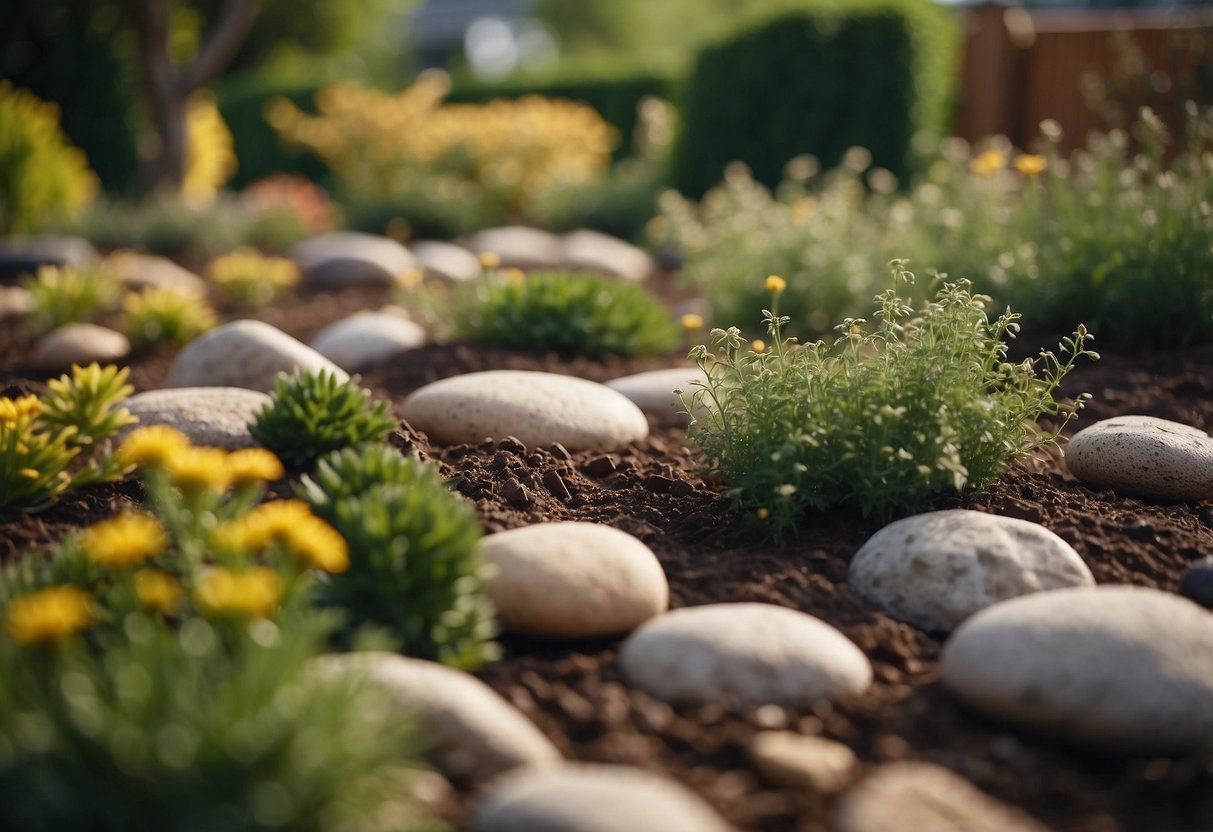
Landscape fabric can help control mud in your garden. It acts as a barrier to weeds and helps stabilize the soil.
To install, clear away debris and level the muddy areas. Lay the fabric over the mud, securing it with garden staples.
For more details, visit this guide.
10) Terracotta Tiles

Terracotta tiles are a lovely choice for garden pathways and patios. They bring a warm, earthy tone that enhances any outdoor space.
These tiles work well in areas with moderate weather. They are durable and handle both rain and sun.
To keep your terracotta tiles looking great, make sure to seal them. This helps protect against moisture and stains. Terracotta tiles can add a rustic charm and practicality to your garden. For more details, check out Outdoor Terracotta Tiles.
Understanding Muddy Areas

Muddy areas in your garden can be frustrating. Knowing the causes and the impact they have on your garden can help you manage them better.
Causes of Muddy Areas
Muddy areas often result from poor drainage or heavy rainfall. If your garden soil doesn’t absorb water well, it pools on the surface, creating mud.
Compacted soil can also cause poor drainage. When soil particles are too close together, water can’t seep through easily.
Low spots in your garden naturally collect water, leading to persistent muddy areas. If you have a flat yard or areas that dip, water doesn’t drain properly.
Impact of Muddy Areas on Gardens
Muddy areas can damage your plants and make it hard to maintain your garden. Muddy soil can suffocate plant roots, leading to poor growth or plant death.
Excess moisture encourages pests like mosquitoes and slugs. These pests can harm both your plants and your enjoyment of the garden.
Mud makes garden paths and seating areas messy and slippery. This can make it difficult to move around and enjoy your outdoor space.
Using these insights, you can find appropriate solutions and create a more pleasant garden environment.
Effective Drainage Solutions

Proper drainage is crucial to prevent your garden from becoming a muddy mess. Two effective methods include installing French drains and using gravel and sand.
Installing French Drains
French drains can help redirect water away from muddy areas. They consist of a trench filled with gravel or rock that contains a perforated pipe. This pipe collects and directs water to a designated area like a rain garden or storm drain, preventing waterlogging.
To install a French drain:
- Dig a trench: Make it about 18 inches deep and 9-12 inches wide.
- Add gravel: Fill the bottom with a few inches of gravel.
- Place the pipe: Lay a perforated pipe in the trench.
- Cover with more gravel: Ensure the pipe is fully covered, then backfill the trench.
Regular maintenance, such as clearing debris from the pipe, will keep your French drain functional for years.
Using Gravel and Sand
Gravel and sand can effectively improve your garden’s drainage. Gravel pathways or layers under your soil can create channels for water to flow through, reducing mud.
To use gravel and sand:
- Select an area: Identify where water pools.
- Dig down: Remove about 4-6 inches of soil.
- Layer sand: Spread a 1-2 inch layer of coarse sand over the area.
- Add gravel: Cover the sand with 2-3 inches of gravel.
These materials prevent soil compaction and help water seep into the ground. Choose larger gravel sizes for better drainage and reduced soil movement. Paths lined with gravel also provide an attractive, mud-free walking surface in your garden.
For more details, visit gravel garden ideas for efficient improvements.
Low-Maintenance Plant Options
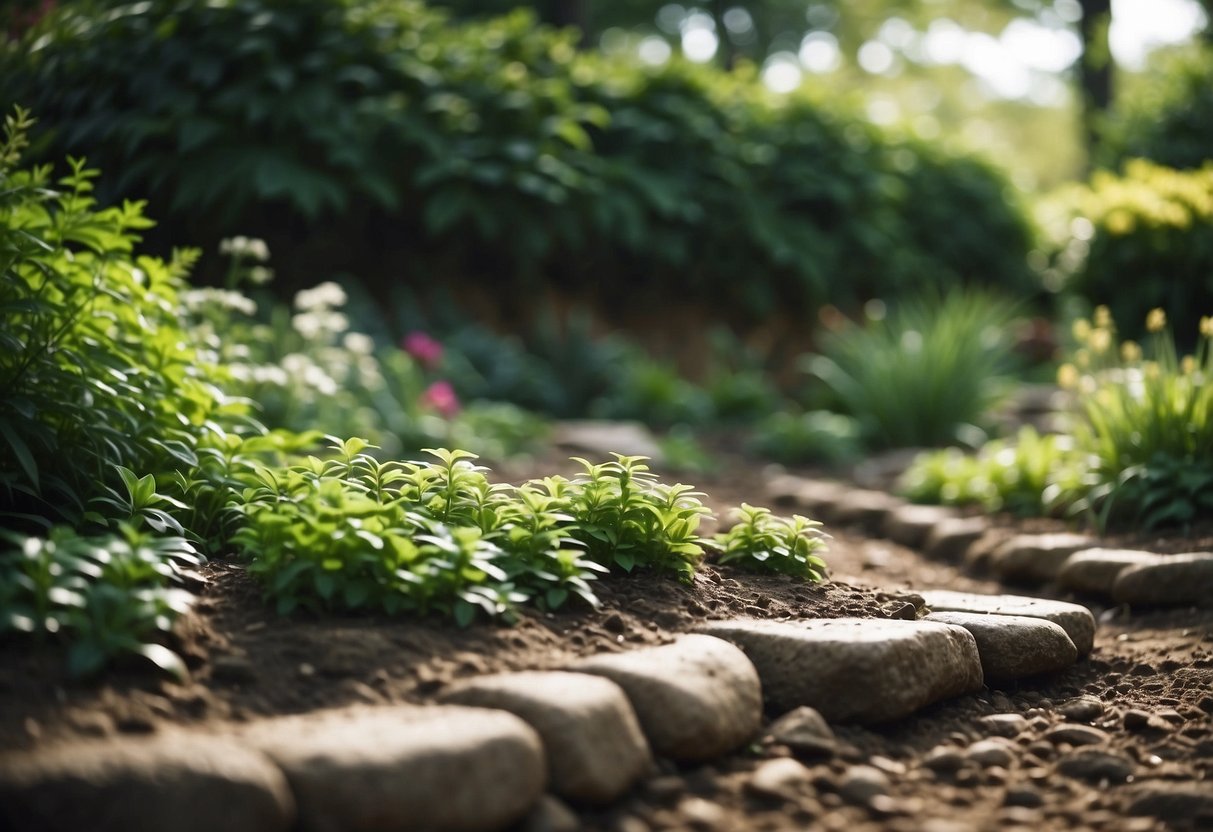
In muddy areas, selecting the right plants can transform your garden. Focus on hardy perennials and specific grasses that thrive in wet soil.
Perennials For Wet Soil
Marsh Marigold is a bright option that loves wet conditions. It blooms with cheerful yellow flowers in the spring. Another great choice is Japanese Iris, with its elegant blooms and tolerance for soggy soil.
Swamp Milkweed is both beautiful and practical. It attracts butterflies and can handle wet feet. For something with a bit of height, consider Joe Pye Weed. This can grow up to six feet tall and blooms with pinkish-purple flowers, ideal for adding vertical interest.
These perennials are not just pretty; they also help control erosion. They are tough enough to thrive in wet areas without needing constant care.
Grass Varieties That Thrive In Mud
Switchgrass is a top pick for muddy areas. It has deep roots that help stabilize soil and prevent erosion. This grass turns a beautiful bronze in the fall, adding seasonal interest.
Sedges are another excellent choice. They come in many varieties, such as Fox Sedge and Palm Sedge, which do well in wet soil. These plants are low-maintenance and can add texture to your garden.
Blue Fescue is an adaptable grass that grows well in moist conditions. It forms neat clumps and stays evergreen in many climates. These grasses provide a natural look and require little upkeep, making them perfect for a low-maintenance garden.







